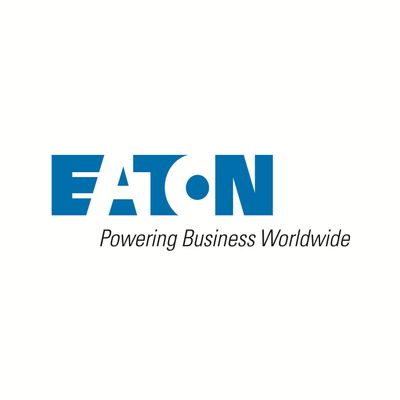
About this Event
Duration: 3 days
Location: Warrendale, PA
Credits: 2.4 CEUs
Target audience
This course is intended for engineers, technicians and others who must configure, and test relays based on protective settings tables, or troubleshoot and operate E-Series relays that are in service.
Learners will be exposed to phasor diagrams, circuit breaker and motor starter controls schemes, and overcurrent protection (IEEE device 51) Time-Current curves. Some prior knowledge of these subjects is suggested.
Learning objective
This course will introduce the learner to the E-Series protective relay product line by presenting a brief overview of the product family and the fundamental information required to interact with and program an E-Series device.
Abstract
This 3-day course is structured as a combination of instructor presentations and hands-on exercises with the emphasis on hands-on interaction with the relays and PowerPort-E configuration software. The course is structured so that a topic is presented to the learner and then reinforced through a related guided lab exercises utilizing desktop workstation hardware. Each new topic will build and expand upon previous material. Participants will gain experience with the relay hardware platforms, and the configuration process including the configuration menu structure and faceplate HMI manipulation, and establishing a connection between the relay and a PC running the PowerPort-E configuration software. The labs will make use of the PowerPort-E software package for creating, saving and editing off-line configuration files; downloading and uploading configurations to and from relays, and extracting and analyzing event, fault and waveform recordings captured by the relay.
This course does not provide training on power system analysis and protection, or the derivation of settings for protective elements.
Course topics include:
The following topics are common to all E-Series relays and are primarily taught using the EDR5000 distribution protection relay as the workstation platform.
- E-Series Relay family, and hardware identification and functionality.
- Configuration menu structure and navigation.
- PowerPort-E software operation and connectivity
- Configuration file creation, saving, editing, and comparing.
- The various relay parameter types and how they are used in the configuration of relays.
- Using the “Device Planning” feature to customize the relay functionality and menu structure to match the application.
- Using the S-gen signal simulator function to test functional operation of protection logic.
- Configuring inputs for status monitoring, and outputs for tripping and control.
- Using blocking, adaptive settings, multiple setting groups and Logic Elements to create complex protection functionality.
- Configuration of the Waveform/Disturbance recorder to capture relay events.
- Using the Quality Manager feature of PowerPort-E to view and analyze Disturbance events.
- Using Zone Selective Interlocking to provide enhanced protection of equipment (taught using the EMR3000 workstation)
The following topics are specific to motor protection and are taught using the EMR3000 motor protection relay as the workstation platform.
- Thermal model protection of induction motor rotors and the parameters that effect that function.
- Motor Start control module functionality including the detection of the “stop”, “start”, and “run” conditions of the motor by the relay.
- Auto-transformer reduced voltage starter application topics:
- - Transition control from reduced to full voltage.
- - Failure to accelerate protection.
- - Incomplete sequence of the transition switching protection.
Options:
This course is offered at Eaton facilities in Warrendale PA and Houston TX. Based on customer need, it can also be conducted at customer locations.
Arriving at our Training Centers
G aining Access:
Upon arriving at our training centers, follow signage and any other directions you may have received before arriving for your event. Our staff will greet you upon arrival and take you to the appropriate training area. You will be asked to sign in for all events so that we can track building occupants in case of an emergency situation.
What to Wear:
Due to the nature of our training facilities and other events taking place, we ask that you wear business casual (or appropriate PPE if your event requires PPE in lab exercises) while in the facilities. Please do NOT wear shorts, open-toed shoes, or loose clothing that can get caught on equipment in the lab spaces.
S afety:
Our labs are working labs, as well as training and testing spaces. Equipment may or may not be energized with control voltages as well as three phase power. We ask that you do not open or operate any equipment within the facility without discussing with your host. Eaton staff will provide you with information on gathering points, as well as exit paths at the start of you event.
Customized Training Available
In addition, Eaton can customize training specific for your organization on a variety of other topics. To learn more visit www.eaton.com/electricalworkertraining or email [email protected].
Continuing Education Units
Eaton’s courses offer professional continuing education training credits (CEUs) certified through the Community College of Allegheny County, Pittsburgh, PA.
Please verify your state’s reciprocity agreement for accepting continuing education units from a member state.
Cancellation Policy
Cancellations of In-Person offerings made prior to two weeks in advance of the first day of scheduled class will incur a 10% cancellation fee along with any incurred costs to date.
Cancellations of In-Person offerings made within two weeks of the first day of class will incur a 100% cancellation fee. If you cannot attend, contact us at [email protected].
Event Venue & Nearby Stays
Eaton Training Center - Pittsburgh, 130 Commonwealth Dr., Warrendale, United States
USD 1495.00








